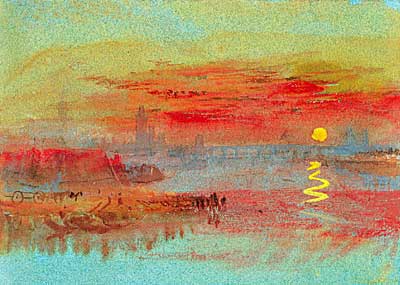By the late nineteenth century a health official for the London Borough of Chelsea calculated that over two hundred tons of fine soot were being released daily into the London atmosphere from a combination of domestic coal-fires and heavy industry. “The big smoke” as the city had been known since the start of the Industrial Revolution, was famous for its smogs and pea-soupers – fogs so dense that visibility was reduced to just a few yards. When John Ruskin wrote of “the dark storm cloud of the nineteenth century” sweeping across England he was not merely indulging himself in a metaphor, but describing the literal truth. The effects of that dark cloud on health could be catastrophic. A particularly dense fog might kill between 500 and 700 Londoners in a single week. In December 1873 it was noted that an entire herd of cattle on show at Islington suddenly dropped dead, asphyxiated by the polluted air of the city.
Not everyone was horrified by this state of affairs. Three years earlier the painter Claude Monet had paid his first trip to London. Fleeing from the aftermath of the Franco-Prussian War, during the months of the Paris Commune, he made arrangements to stay in a room on the top floor of the Savoy. From the eyrie of his hotel room, he was entranced by the spectacular effects of light, colour and atmosphere produced by the fogs of London – “Brouillardopolis”, or fog city, as it was known in the argot of French travellers. He told his dealer, Rene Gimpel, that “I adore London, but what I love more than anything is the fog”. On a later visit, at around the turn of the century, his letters home touch on the subject with obsessive frequency.
“Turner, Whistler and Monet”, at Tate Britain,...

Turner, Whistler, Monet at Tate Britain
13-02-2005

